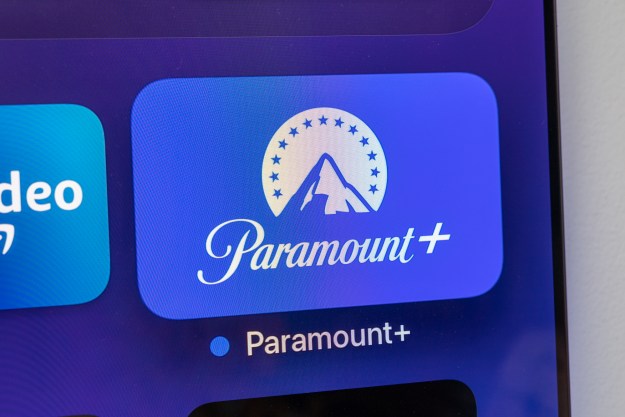 Want a sexy new home theater in your living room but don’t know where to begin? A good jumping-off point is your budget. It can be very difficult to come up with the right amount to spend on decking out one’s pad, especially if you’re a newcomer to the hobby and don’t know what gear and materials you need. This short guide will help you get on the path to budgeting for your home theater though, as well as getting the most from every dollar.
Want a sexy new home theater in your living room but don’t know where to begin? A good jumping-off point is your budget. It can be very difficult to come up with the right amount to spend on decking out one’s pad, especially if you’re a newcomer to the hobby and don’t know what gear and materials you need. This short guide will help you get on the path to budgeting for your home theater though, as well as getting the most from every dollar.
Initial Steps
Define the scope of the project. Assuming you are going to build your home theater yourself, this is a natural place to start. First ask yourself a series of questions. For example: Are you remodeling a garage into a dedicated room? If so, you’ll need to add construction costs and materials like drywall into the mix, which is another story altogether. For the sake of this article, let’s assume you are simply turning a room in your home into a theater or media room.
Set a number. We like to separate a home theater budget into gear and “extra” items, like lighting, shades, and furniture—things that aren’t essential to the actual act of watching a movie or TV in surround sound. That way, you can add non-essential items as you can afford them. After all, you can’t watch TV without a display, but you can live without that lighted, framed poster of Lawrence of Arabia for the time being, right?
Equipment and Setup
Now that you’ve defined the scope of the project, you can determine a number for your home theater components budget. A low-end system can be as little as $4,000, and a high-end system can be . . . well, the sky’s really the limit. Some people spend as much on their home theaters as others spend on their entire homes! That part is all up to you. Whatever number you decide on, don’t be surprised if you spend 10% or more than you figured in the first place, though—it’s very common.

Determine which extras you’ll need. Here’s a quick checklist:
√ Do I want automated lighting?
Automated lighting is one of those little extras that really ties the room into the whole home theater experience. That being said, you can spend oodles of cash on a high-end lighting system. For a quick and easy fix, put your lights in the home theater on a dimmer that can be controlled by your universal remote. Lutron and others make some great products for just such needs, and you don’t have to spend a bundle on them either.
√ Do I need ambient light control?
Depending on your room, this could either be costly, or a piece of cake. While we don’t suggest turning a solarium into a spot for watching movies cinematically, some windows are okay if you can tame the ambient light coming into the room. Simple, opaque drapes will do the trick, or you can go all-out and install motorized blackout shades. Again, this part of your budget is subjective and totally up to your discretion.
√ Do I need soundproofing in my room?
If you have kids, soundproofing is a must. Some folks go all-out and install soundproof doors or even build their home theater with a staggered-stud construction to keep sound leakage to a minimum. We recommend doing simple things like applying an acoustic door seal to your existing doors and using a lot of cushy materials in your theater that will help absorb errant audio.
√ Do I want to acoustically treat my room?
While it may sound technical, this process doesn’t have to be complex or expensive. And if you spring for a nice audio system, you would be doing yourself an injustice if you didn’t add some acoustical treatments to your room. Some folks even make their own treatments. Generally, you just need a nice mix of absorptive and reflective materials. Put reflective materials (like a bookshelf filled with books) at the back of the room and absorptive materials (e.g. cushions, heavy curtains or soft couches) in the front of the room.
√ What will I use for furniture?
If you have existing furniture that would make a nice addition to your theater, more power to you. Theater seating can get costly, so if you need to trim expenses here, opt for simple upholstered couches and chairs, which will also help absorb sound.
√ Do I need accessories like a power conditioner or remote control?
A good remote is absolutely necessary for your home theater. Luckily, these units aren’t relatively that expensive: Think $100-$200 for a decent option. Power conditioners are great additions too, especially for rooms with older wiring, and vary considerably in price depending on features. Richard Gray’s Power Company makes incredible products. Do your research to determine your needs.
√ Do I want to decorate my theater with wall art or movie posters?
Interior décor is a whole other ball game, and like anything in your home, can be as expensive or as cost-efficient as you like. Things like a popcorn machine and framed movie posters will add to your spending, so proceed with caution.
Ask yourself: What do I need now, and what can I live without? We find that a great way to build a stellar system is approaching it gradually over time. In fact, most home theater enthusiasts are constantly upgrading and changing their systems. If you don’t have the money right now for, say, a separate speaker system and receiver, consider an all-in-one home theater system. Many manufacturers, like Samsung, even make these systems with a Blu-ray player built-in. That way, you can focus on buying a really nice flat-panel and upgrading additional components later. Another tip to saving money is to buy used. Used equipment can often be found at incredible prices online. Just make sure there is a good return policy if something is wrong with your component.
Crunching the Numbers
Sample HT Budget
To recap the above, it we planned to spend $4,000 on our home theater equipment, then ideally our budget would be broken down as follows:
$2200 on video (55%)
$1400 on audio (35%)
$200 on cables (10%)
With this in mind, we can start shopping. Here’s a sample selection of what we might find:
Video System
Panasonic VIERA TC-P50S1 50-inch Plasma Display: $1,600
Sony BDP-S550: $400
Tivo HD DVR: $300
Total Video System: $2,300
Audio System
Klipsch HD Theater 1000: $1,000
Pioneer VSX-919AH Receiver: $ 400
Total Audio System: $1,400
Wires & Cable: $200
Total Components Budget: $4,100
Note that in this example, we’re $100 over budget, which is not that big of a deal. Also notice that we purchased a 7.1 channel receiver in case we want to upgrade from a 5.1 system at some point. For receivers, it’s always good to add a little extra functionality so that you have a component that grows as your taste for home theater grows.
Now it’s time for you to start shopping – happy bargain hunting!
Editors' Recommendations
- Best 75-inch TV deals: Get a big screen from $470
- Best 70-inch TV deals: Get a big screen for sports for $420
- Best 65-inch TV deals: Get a 65-inch 4K TV for under $400
- Best Bluetooth speaker deals: Save on Bose, Sonos, JBL, and more
- Crutchfield is having a huge sale on Onkyo home theater receivers


